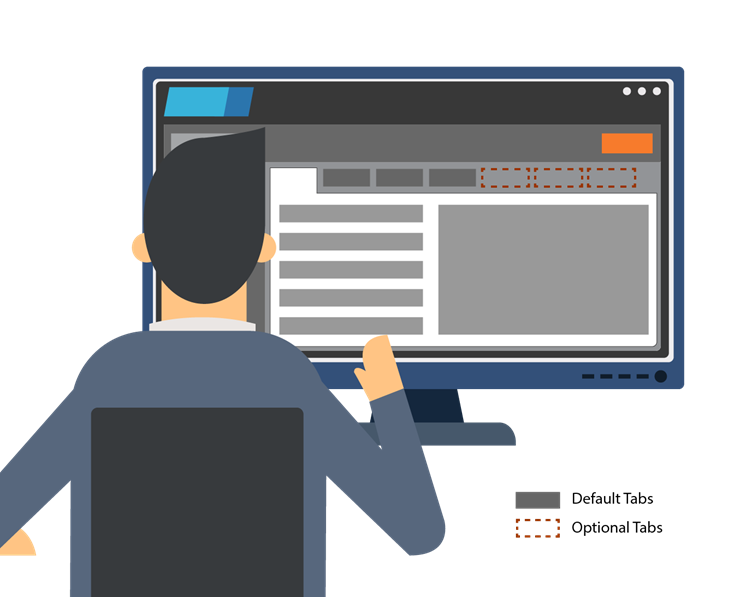
Composite tabs
Custom tab best practices
Users typically want to display all customer information without having to expand sections or access tabs. This data-centric thinking results in a cluttered desktop with more data than a user can assimilate at one time. Establishing guidelines can help with this issue, so following best practices when designing a customer composite is recommended.
If the data is needed less than 80 percent of the time, then choose one of the following designs:
- Make a new tab to display the data
- Make the data accessible from a collapsed section
- Provide a pop-up search function
Adding more tabs helps organize the information better for an end user. But the users could still be presented with tab overload. Displaying numerous tabs that may be unnecessary in a specific context impacts user productivity and learning. Make some tabs conditional to help make the application more user-friendly.
The customer composite is for occasional reference, so if users spend most of their time in the customer composite during an interaction, process flows are inadequate. If needed, redisplay the customer composite data within a service flow process to keep the user’s focus on one area of the screen.
The customer composite is not for data updates or processing. Trying to update data directly from the customer composite bypasses workflow processing and does not guide and advise. Instead, you can launch a service case from the customer composite and does not bypass the standard way to do things.
Defer the load of tabs to improve performance. This means that the data is not loaded until it is used.
If you are having problems with your training, please review the Pega Academy Support FAQs.
Want to help us improve this content?
